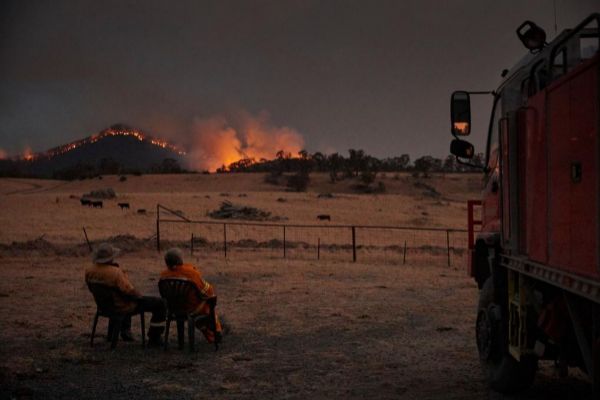- Environment: The 10 challenges of humanity to solve the climate crisis in this decade
- Environment: The era of ecological consciousness: how we learned that there is only one Earth
It is hardly a symbol, but it is very powerful . By name, the Last Judgment Clock. Because of the image he uses, the countdown to nuclear destruction; and by the entity who uses it, the Board of Science and Safety of Atomic Scientists, which brings together among other leading researchers 13 Nobel Prizes.
As it has been doing since 1945, this Thursday has updated its forecast on the proximity of humanity to its destruction by placing it only 100 seconds . Faced with the hands that remained motionless in 2019, this year the planet would have advanced again towards the abyss. The severity of the diagnosis is summed up in another fact: it had not been so close since 1953, at the beginning of the Cold War. For these scientists, one of the moments of relaxation occurred in 1991, when the international tension between the United States and the then Soviet Union was precisely turned off. That year the distance to the self-destruction of this indicator widened to 17 minutes compared to less than two current.
"The world has entered the scope of the two-minute warning, a period in which the danger is high and the margin of error low," says Rachel Branson, president of this institution.
The global risk analysis highlights how in 2019 "several major treaties and negotiations on arms control have been undermined or undermined" and "an environment conducive to a renewed arms race" in which "nuclear war is a genuine possibility. "
The Bulletin of the Science and Security Board of Atomic Scientists also mentions the increase in disinformation campaigns aimed at "sowing distrust in institutions and among nations, undermining national and international efforts to promote peace and protect the planet. ". According to the complaint, cooperative approaches have been relegated and "we have seen influential leaders denigrate and rule out the most effective methods to address complex threats."
The scientists of this organism praise the increase of the public conscience on the climatic crisis, that they attribute "to the massive protests of the young people of the whole world". In this area, they underline the contrast of the "excellent speeches" with the "few concrete plans". His criticism of inactivity also affects ignorance about recent events. "This limited political response came during a year when the effects of man-made climate change manifested in one of the warmest years recorded, extensive forest fires and the faster-than-expected melting of glacial ice," says the document.
Both the Board of Atomic Scientists and its president, Rachel Branson, in particular, make an explicit call to citizen activism. "It's 100 seconds to midnight, the most dangerous situation that humanity has faced. Now is the time to unite and act," the document concludes. "Continue to ask your leaders to act now, and as if their lives depended on it. Because yours, and ours, certainly do," says the researcher.
According to the criteria of The Trust Project
Know more- Nobel Prizes
- U.S
- science
- Environment
- Climate change
- Climate Summit
The impossible decade The age of ecological consciousness: how we learned that there is only one Earth
Climate crisis The rise in temperatures in the oceans sets a new record in 2019
Climate crisis Australia's fires have already affected 480 million animals

